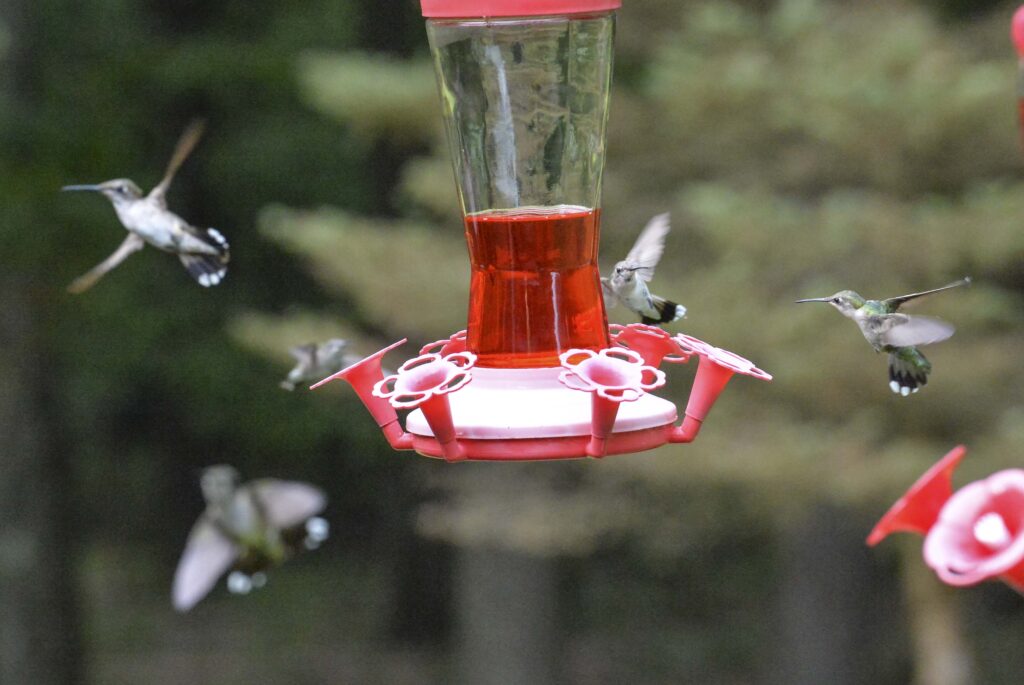The Turners have5 28-ounce feeders and make their own sugar solution
MASONTOWN — Alexander “Buck” Turner and his wife Shirley love hummingbirds and flowers.
Turner said the couple has five 28-ounce feeders plus four regular bird feeders in their yard.
“My wife has three loves,” Turner said. “Hummingbirds, flowers and me — in that order.”
He said a lot of time and care goes into feeding the 50 to 100 plus hummingbirds that daily visit their feeders.
“It takes 10 pounds of sugar every four days to keep the feeders full,” Turner said.
He said his wife makes the hummingbird nectar from scratch.
Shirley boils the water in a large cooking pot, adds the sugar and red food coloring, and it becomes a feast for the hungry hummingbirds.
He said the feeders are not the only thing that attracts the tiny creatures to their yard.
“We live in the country. We have flowers and shrubs everywhere,” Turner said.
He said the regular bird feeders in the yard attract doves, yellow finches, red headed woodpeckers and an assortment of other wild birds.
Food.Com has a recipe for hummingbird nectar for those interested in attracting the birds, but do not have a lot of space for feeders.
- 4 cups water
- 1 cup superfine sugar
- 3-5 drops red food coloring (optional)

Combine the ingredients in a saucepan and bring it to a boil. Allow the sugar to dissolve and remove from heat. Let the nectar cool before pouring it into your feeder. Store the remaining nectar in the refrigerator.
Whether you are making your own nectar or not, hummingbird feeders should be cleaned every 1-6 days, depending on the outside temperature. The hotter it is outside, the more often the feeder should be cleaned and filled with new nectar to avoid spoilage, mold and bacterial growth.
Does keeping your hummingbird feeder up after August cause hummingbirds not to migrate?
According to the West Virginia Division of Natural Resources’ website, keeping a hummingbird feeder up is helpful for the migrating birds.
“In fall, when the flowers begin to fade, the hummingbirds begin their migration southward to their winter range,” the site states. “Do not remove your feeders until you have not observed any hummingbirds for at least a few weeks. During this time, hummers are on the move, and your feeders may be providing much needed energy to birds passing through. Contrary to popular reports, feeders will not encourage hummers to stay later than they should.
“The birds that we see at our feeders toward the end of the breeding season are often late fledglings. After building up a substantial supply of fat, they cross the Gulf of Mexico and move to their winter range in Central and South America. Each spring ruby-throated hummingbirds move northward from their winter range, cross the Gulf of Mexico and continue north to breeding areas in the eastern U. S. and Canada, arriving in West Virginia about mid-April.”
TWEET @DominionPostWV




